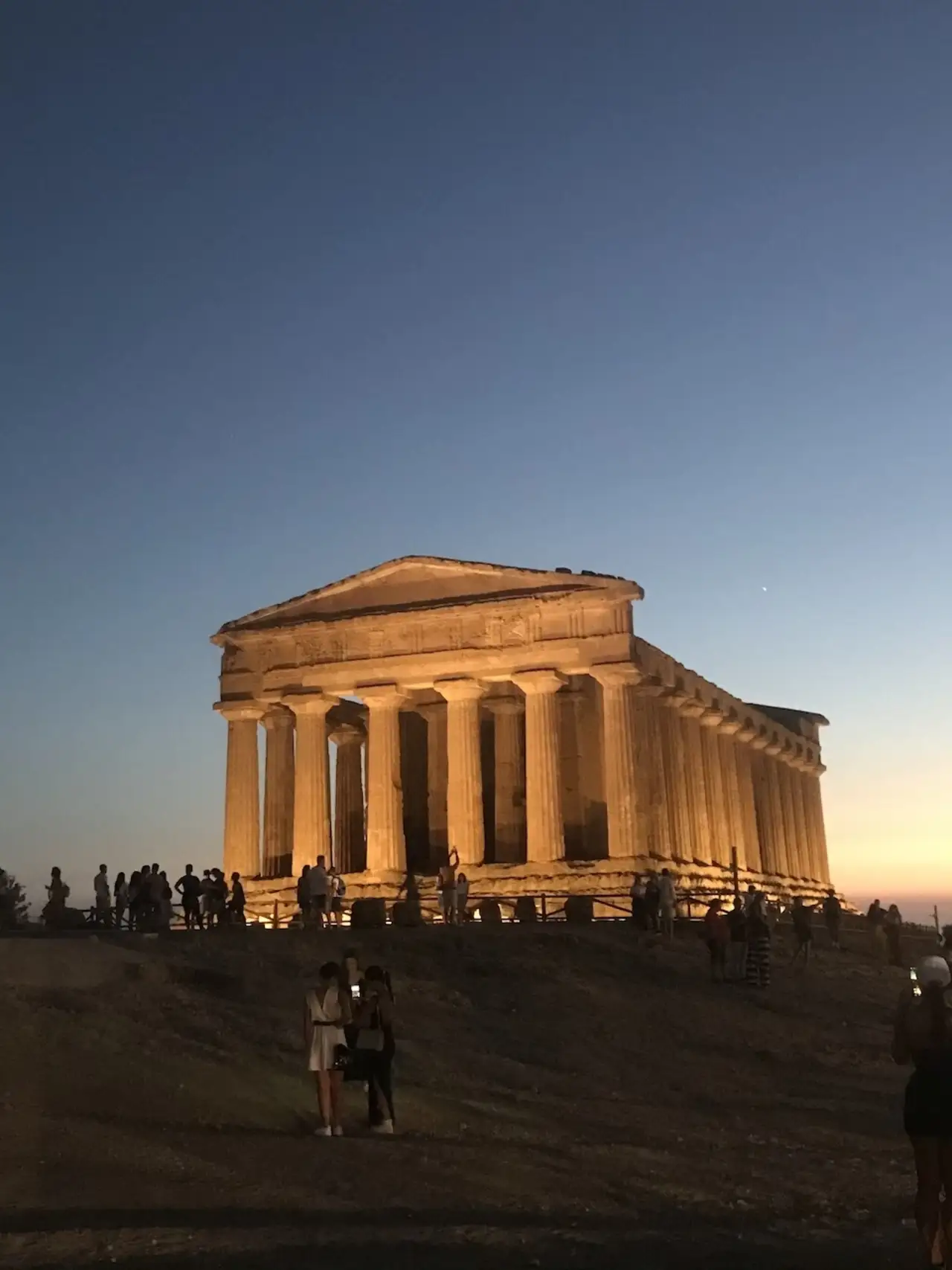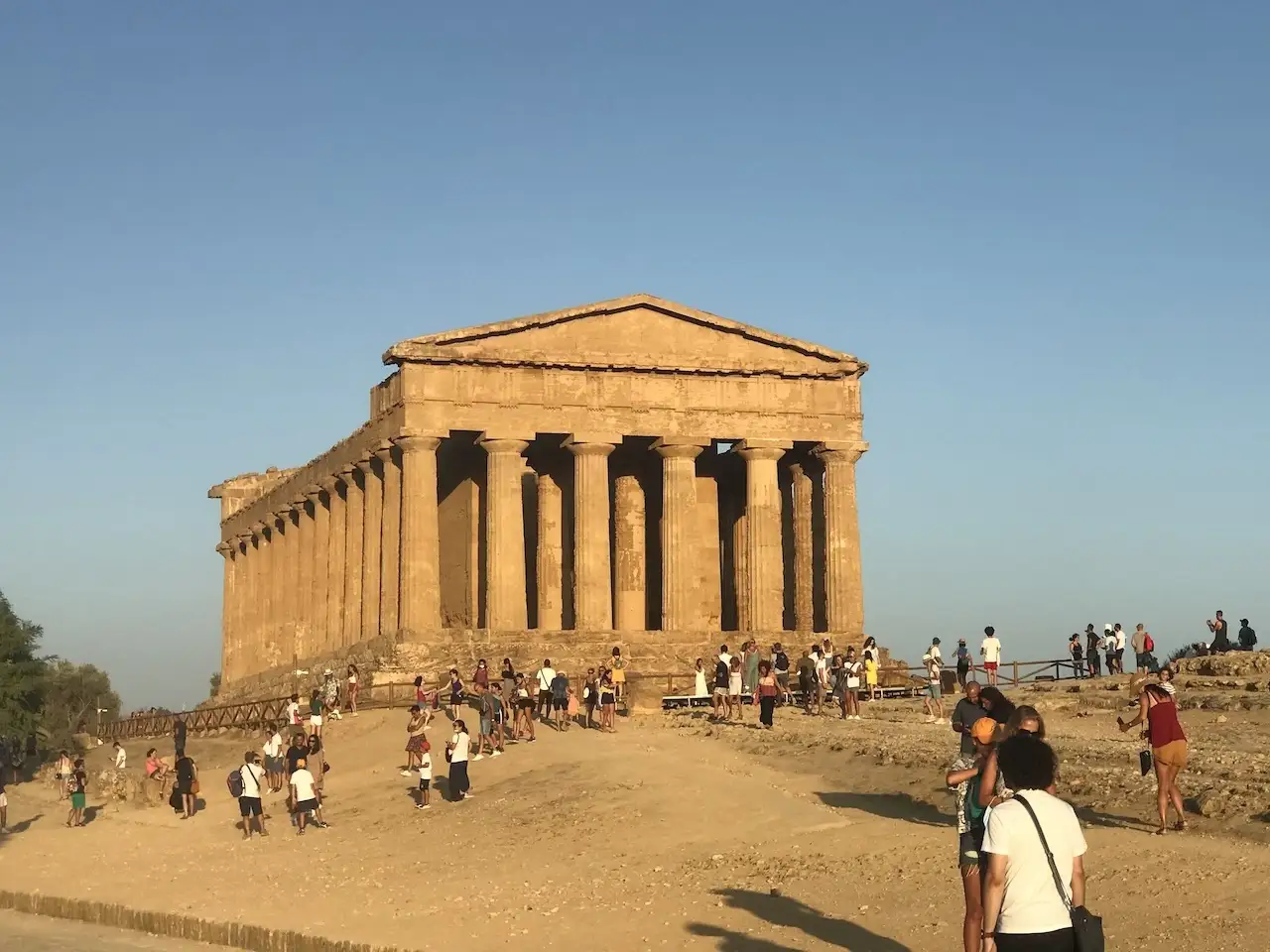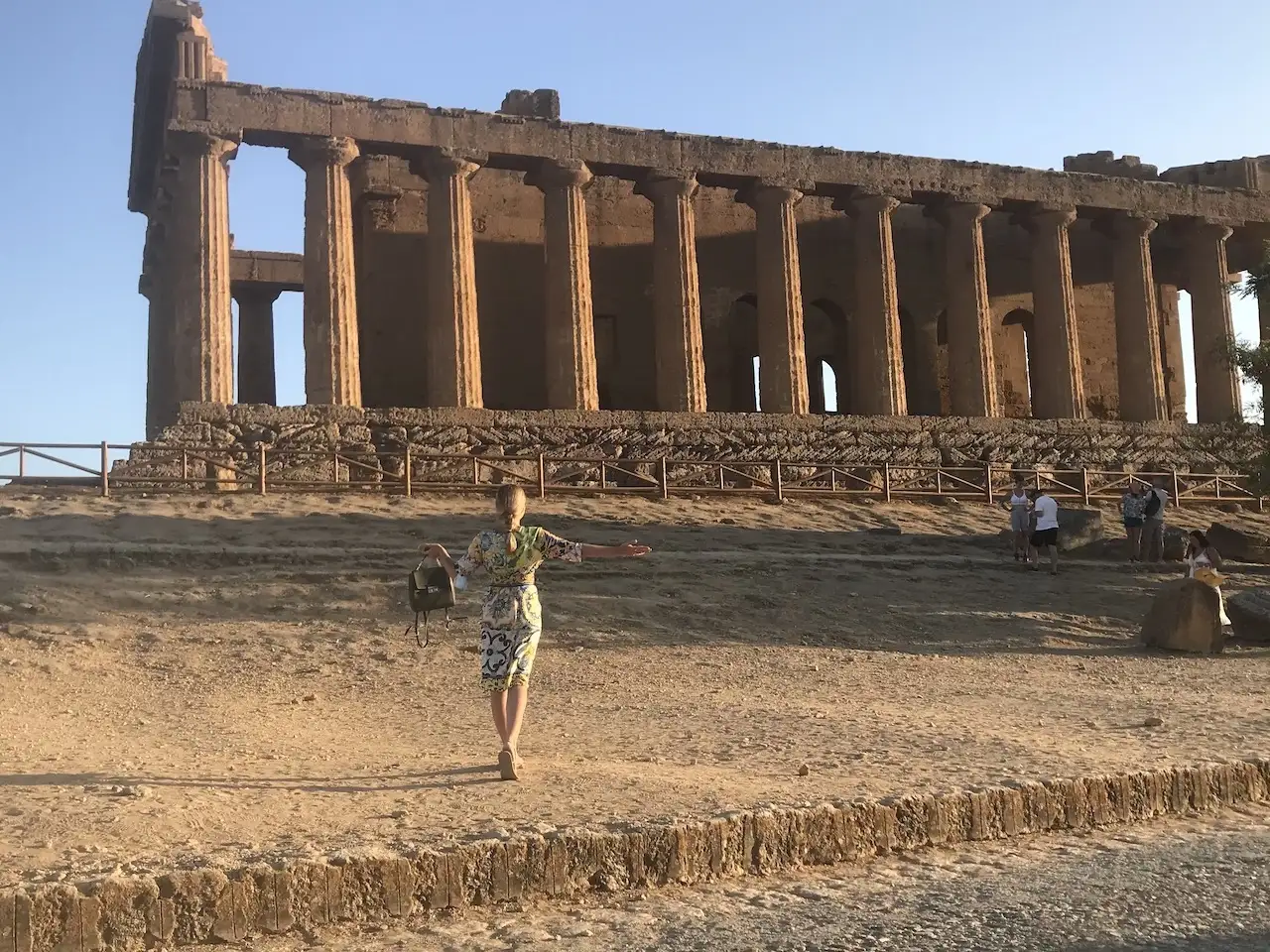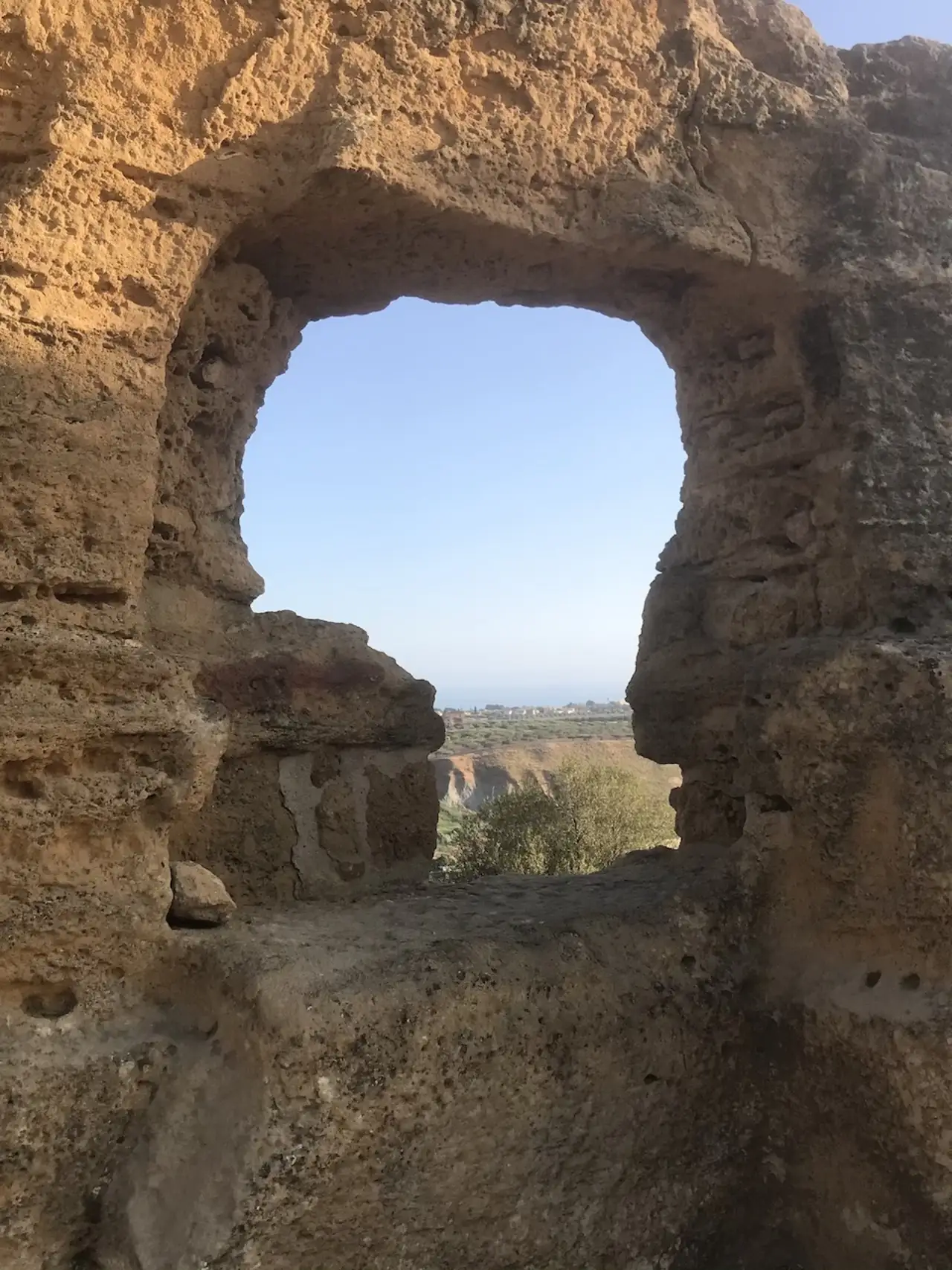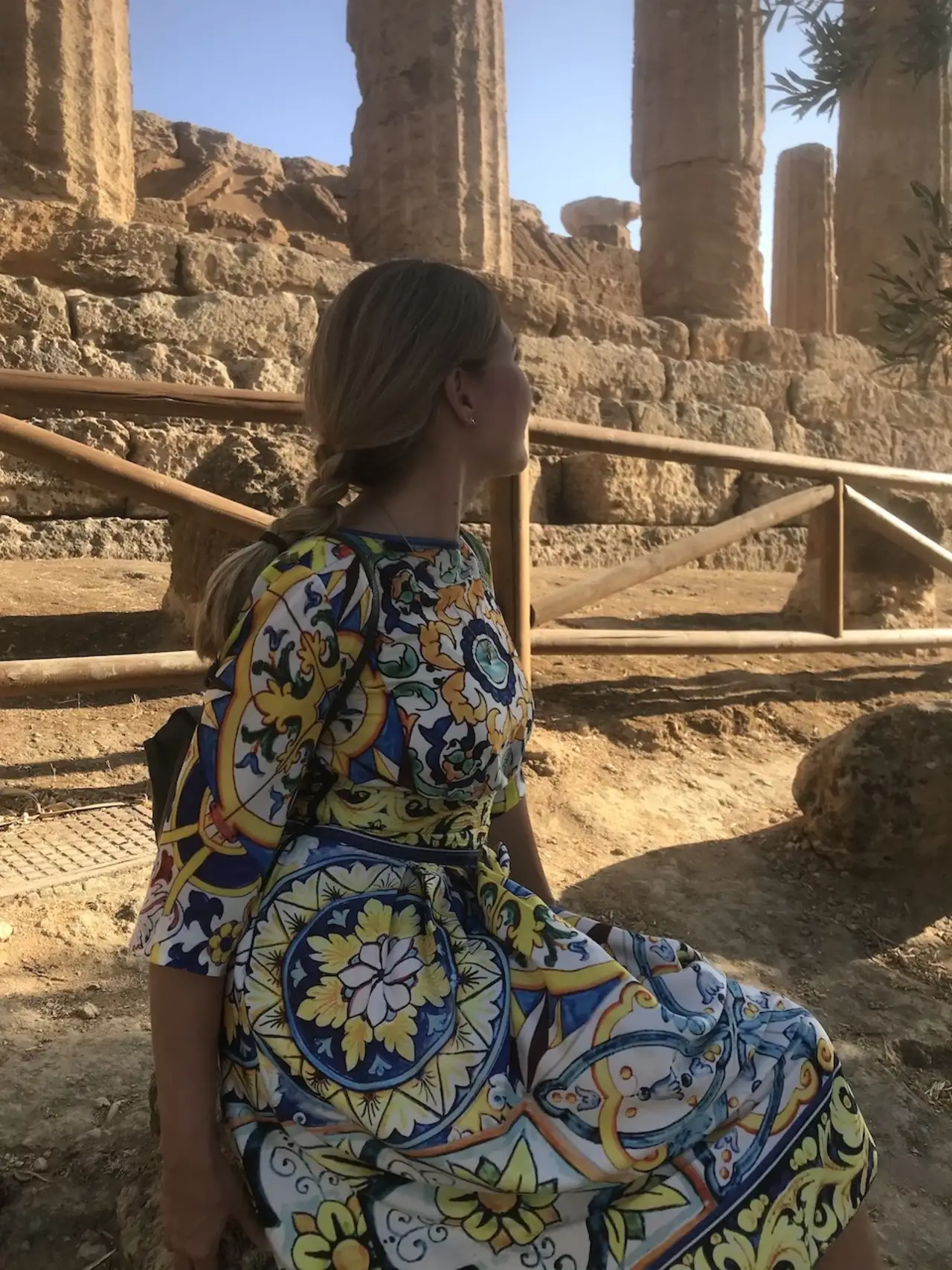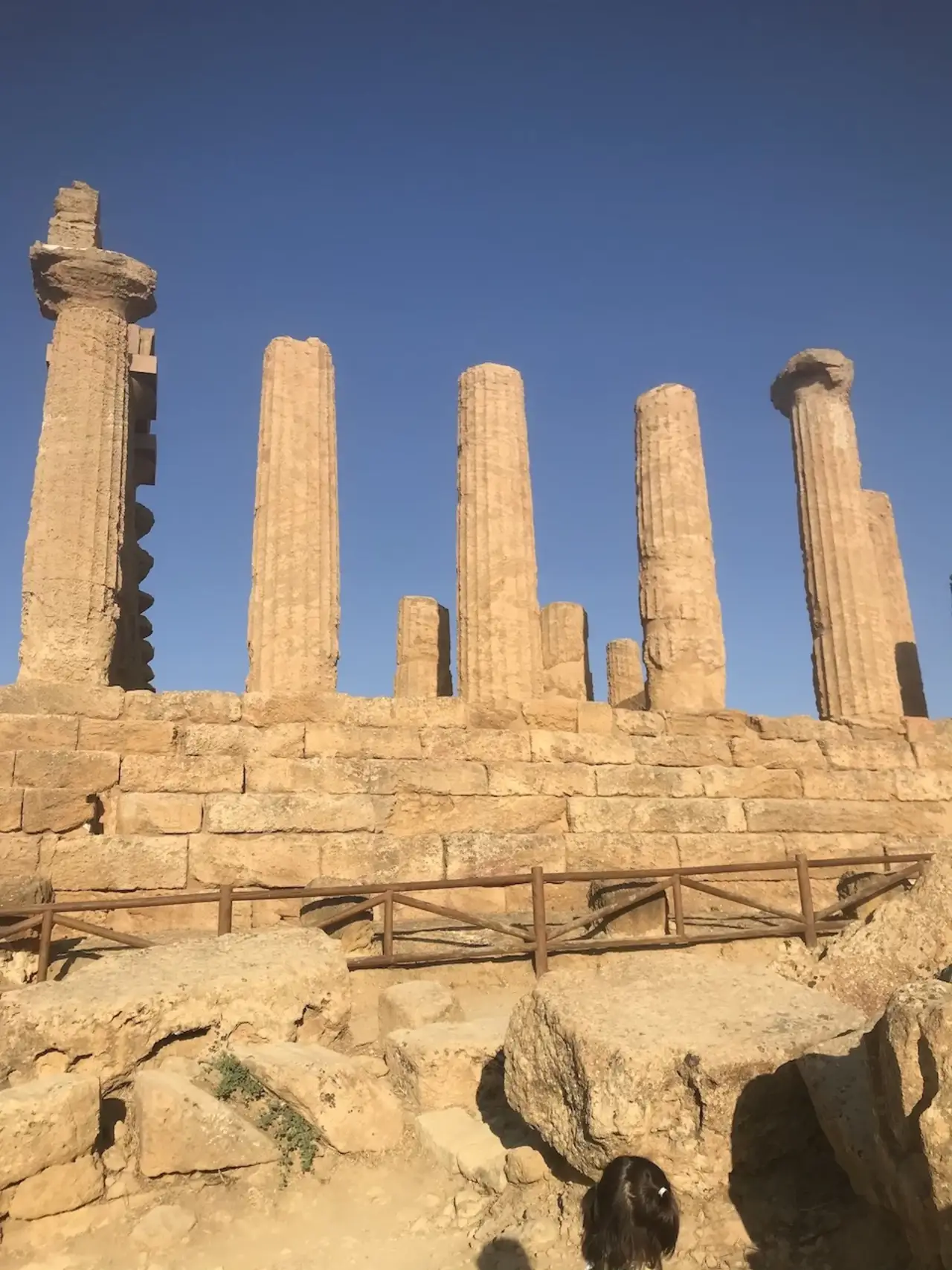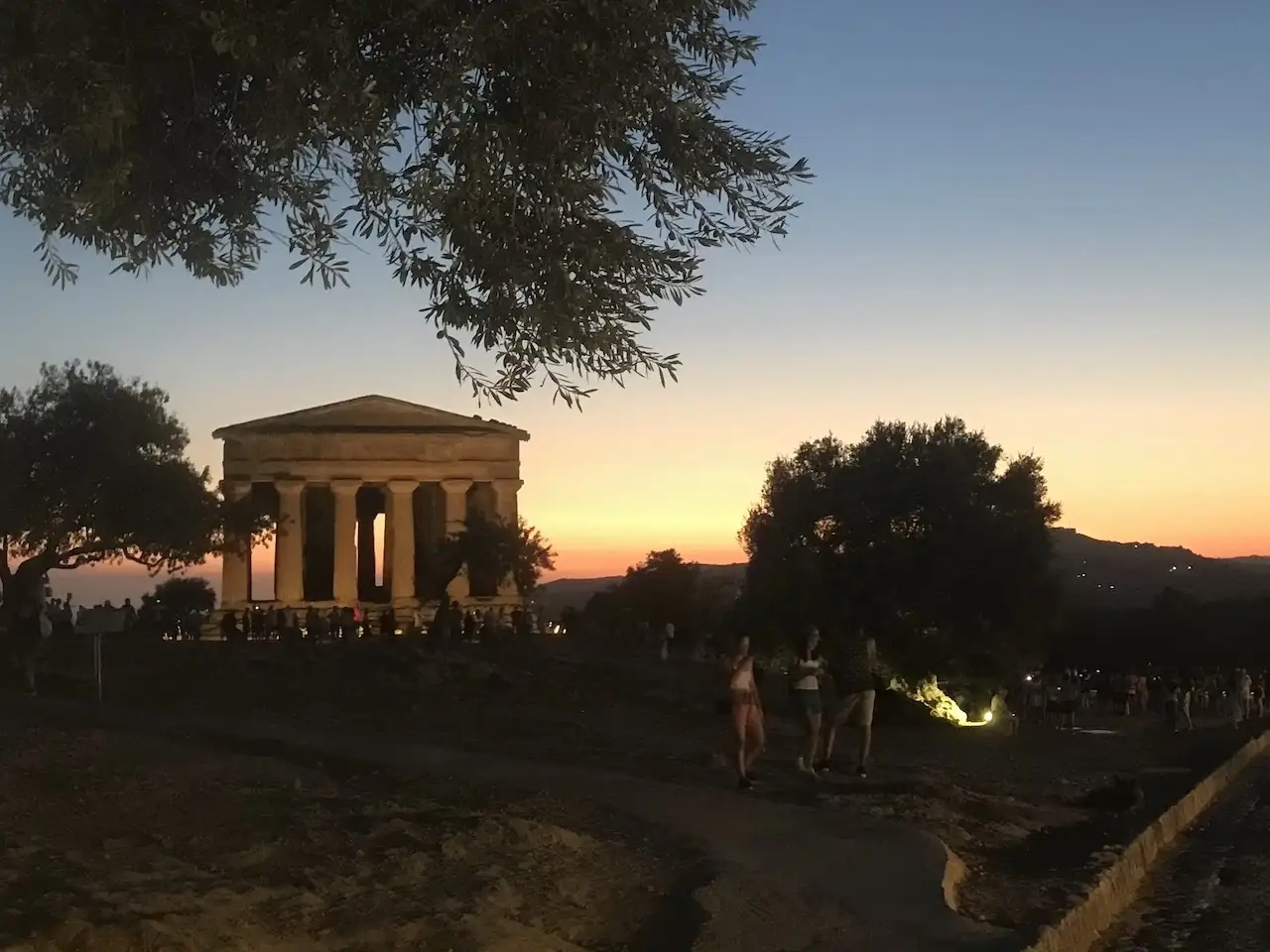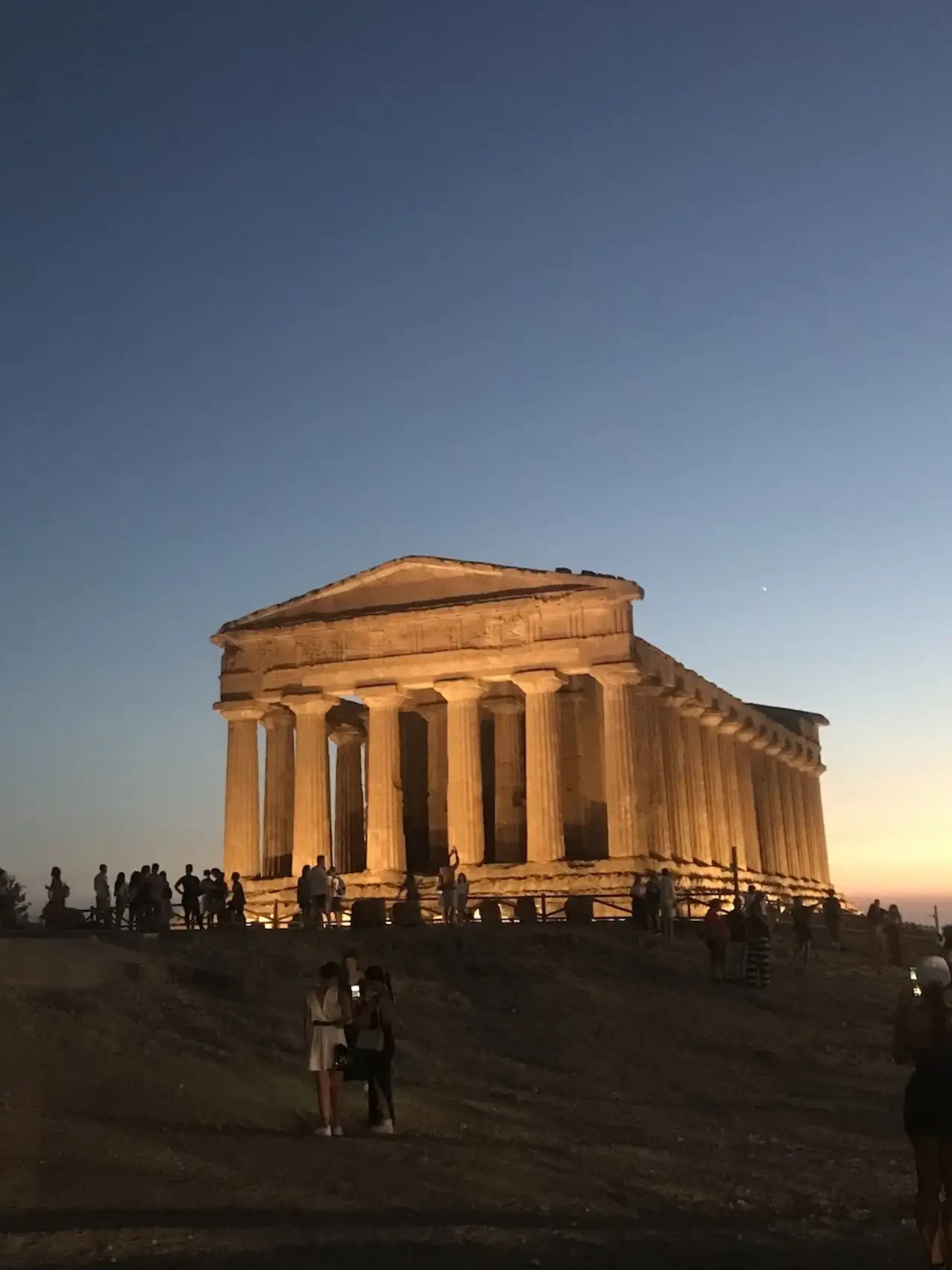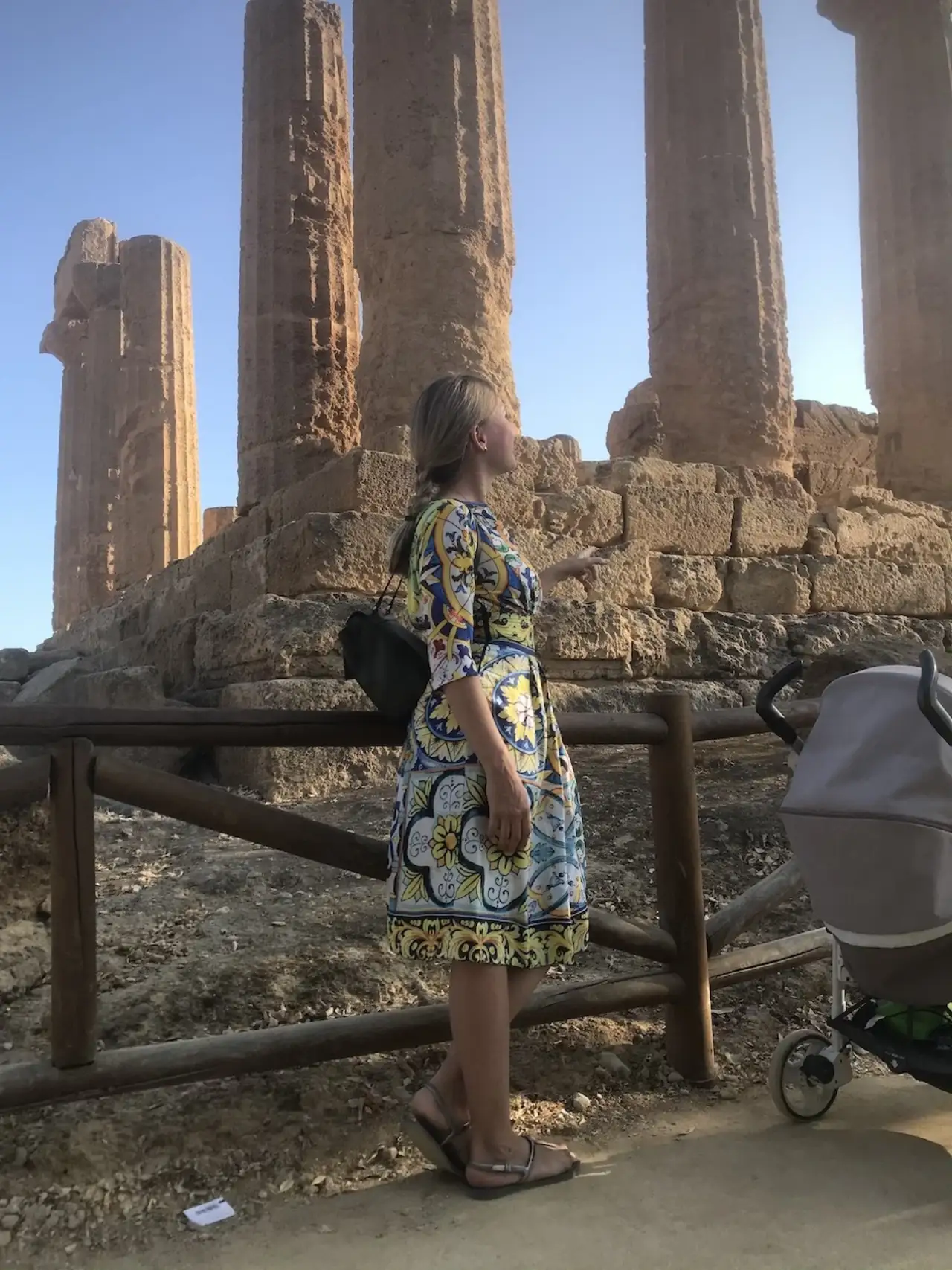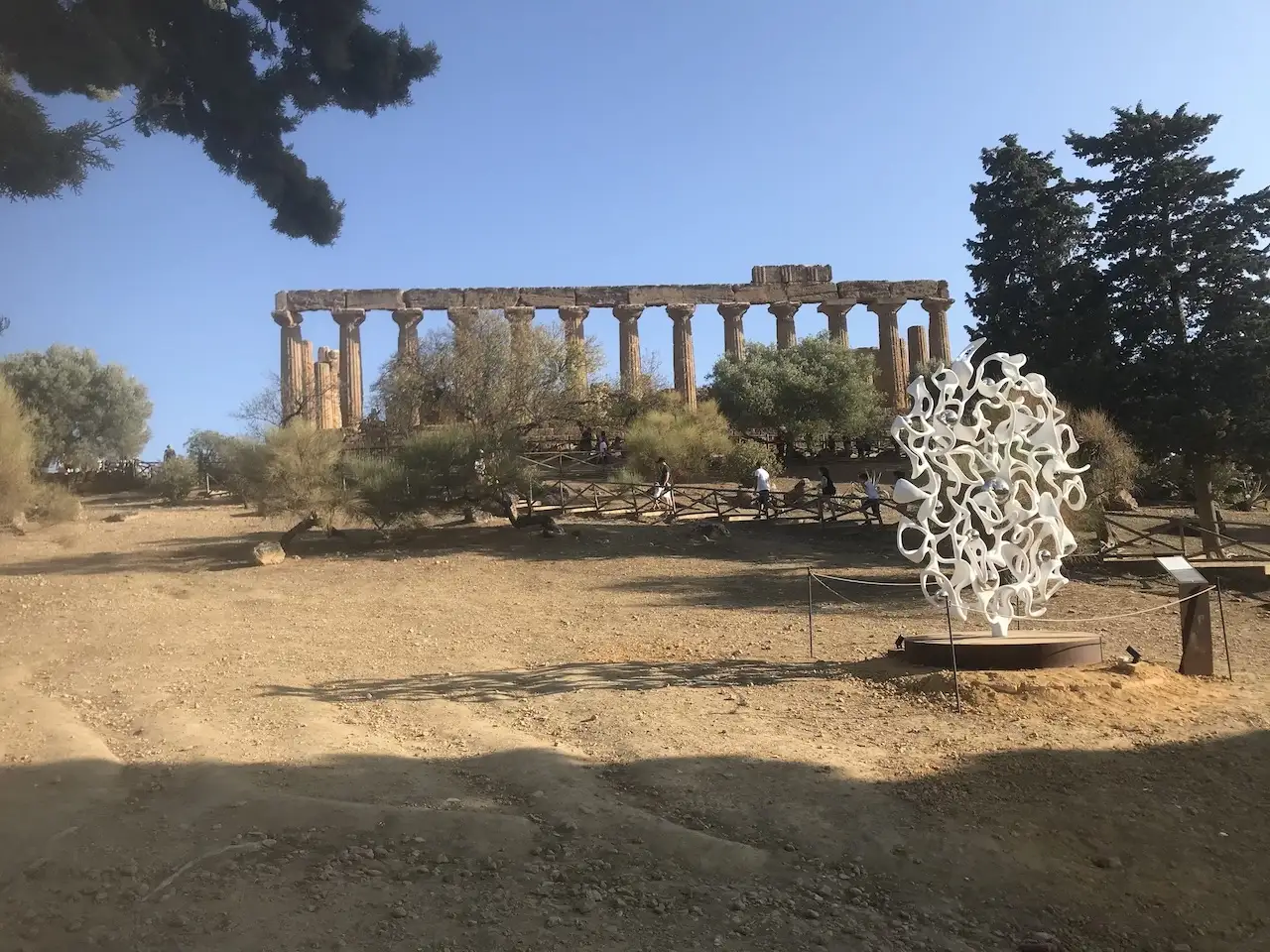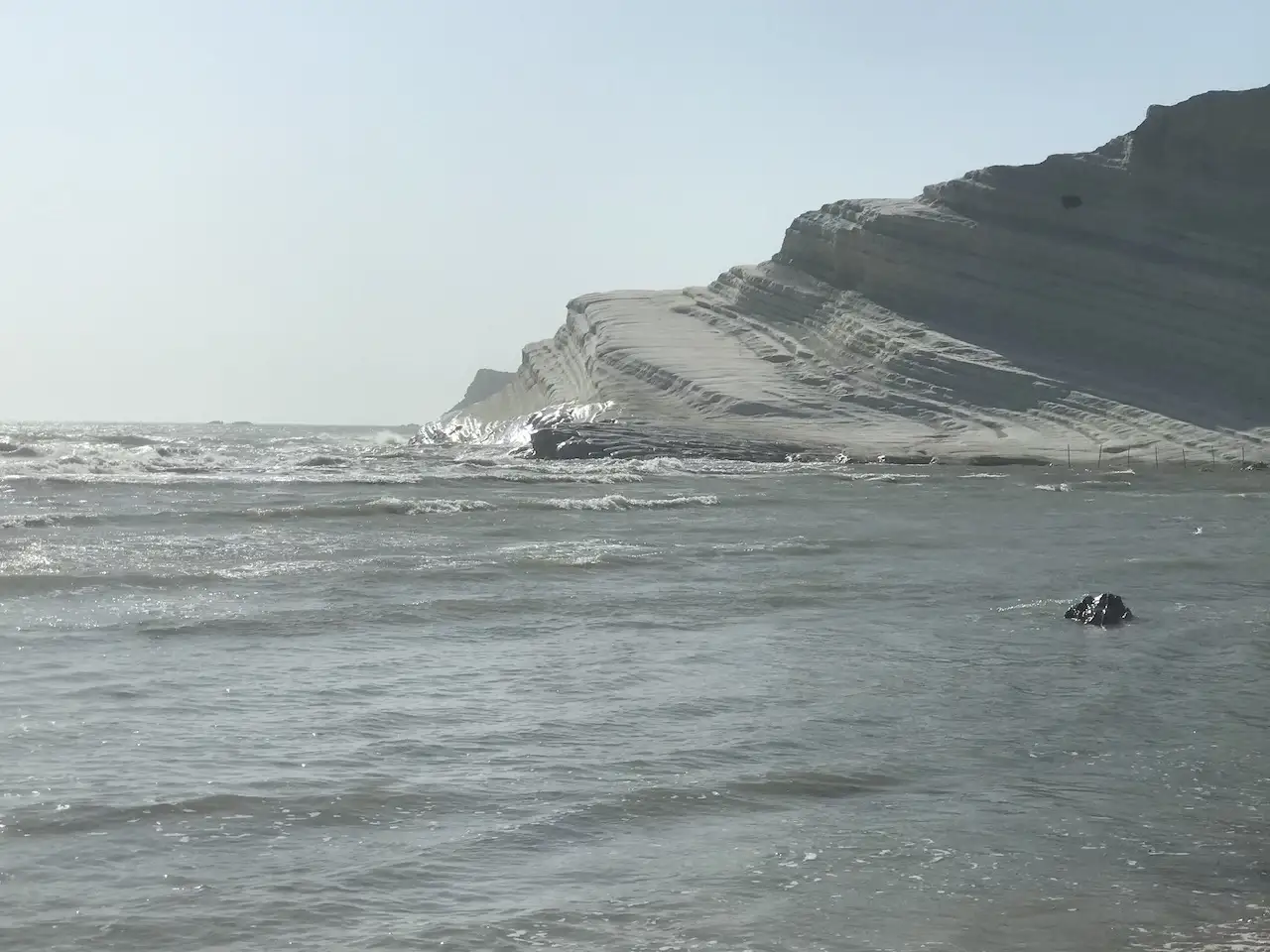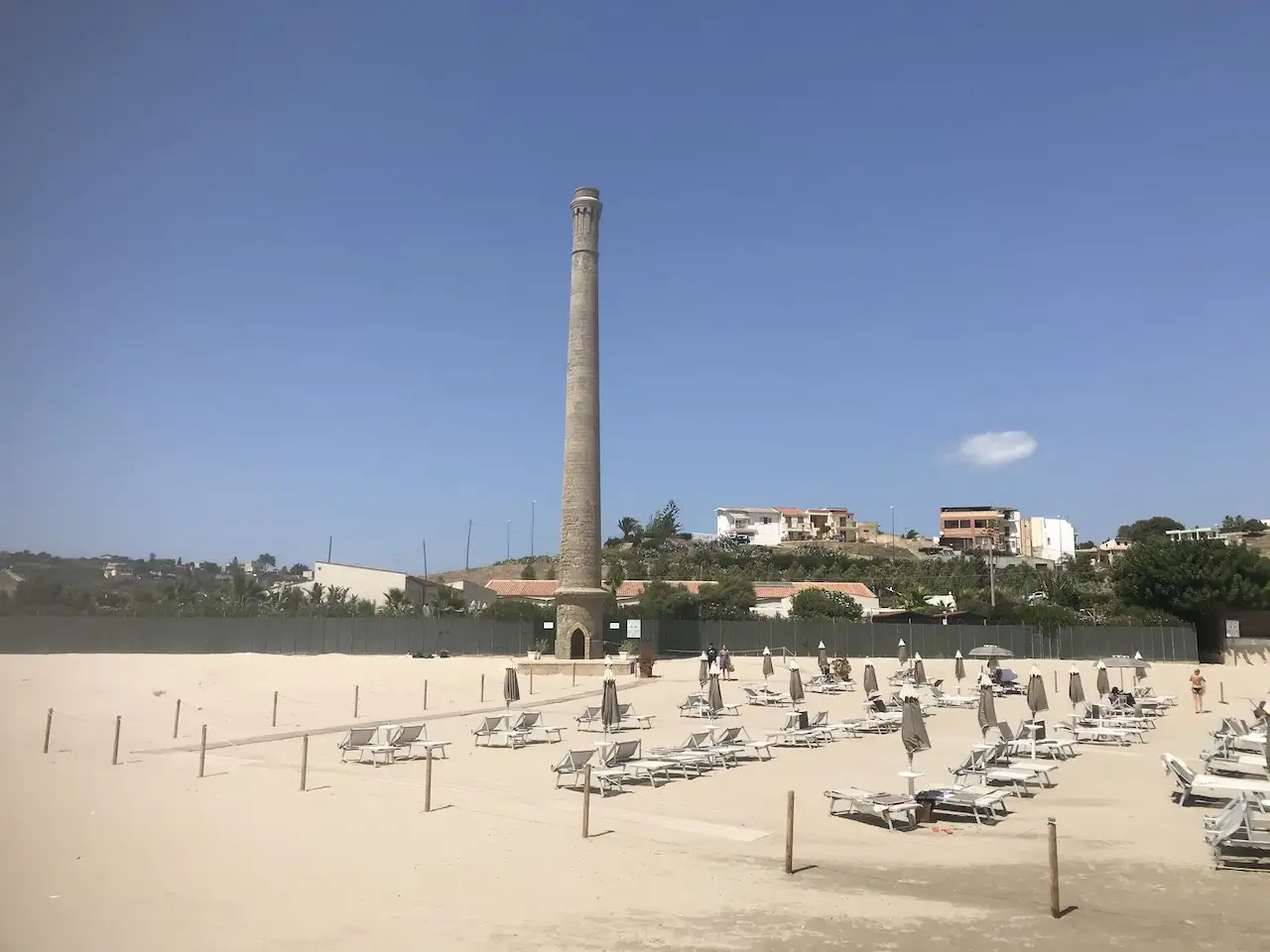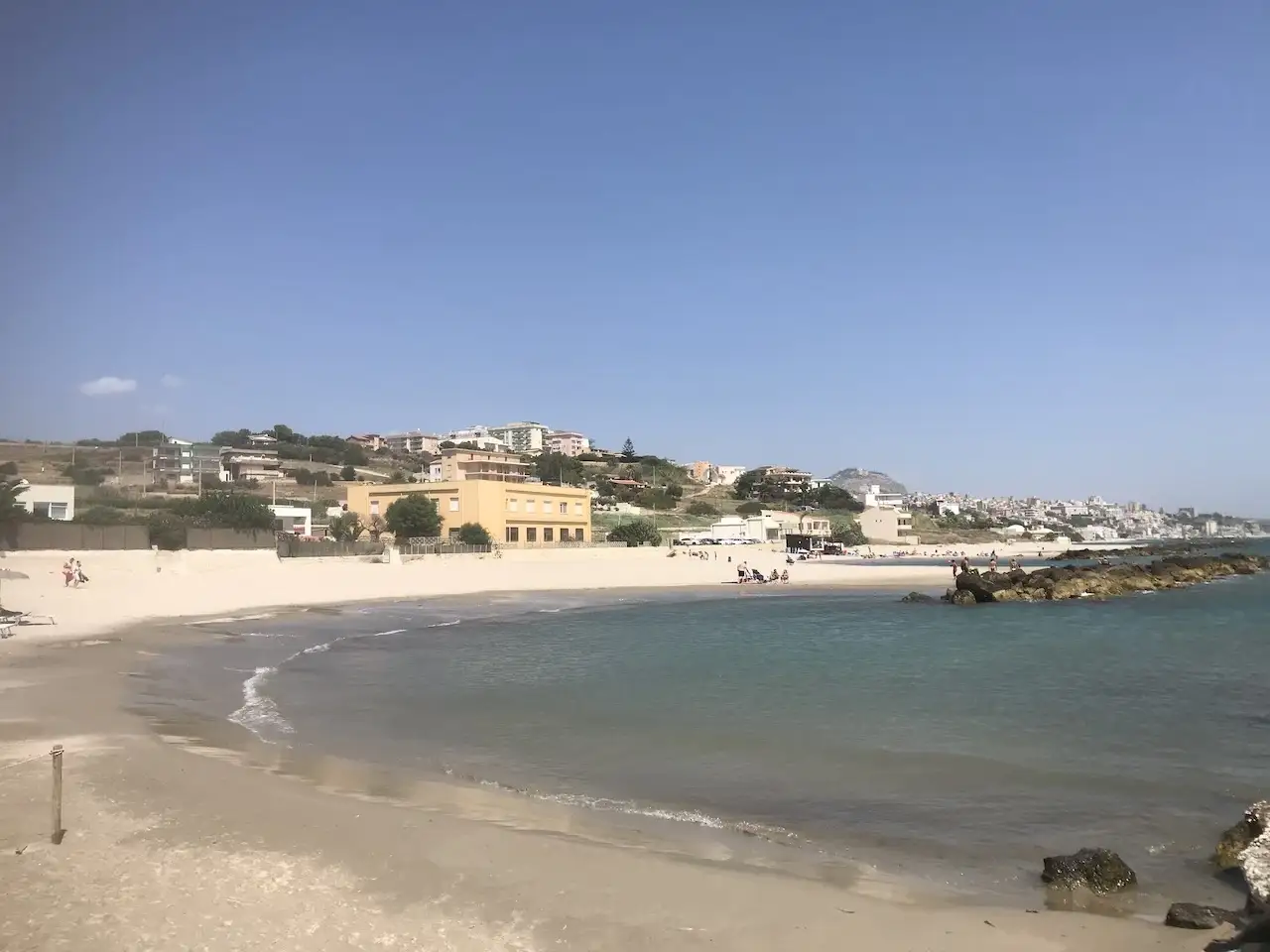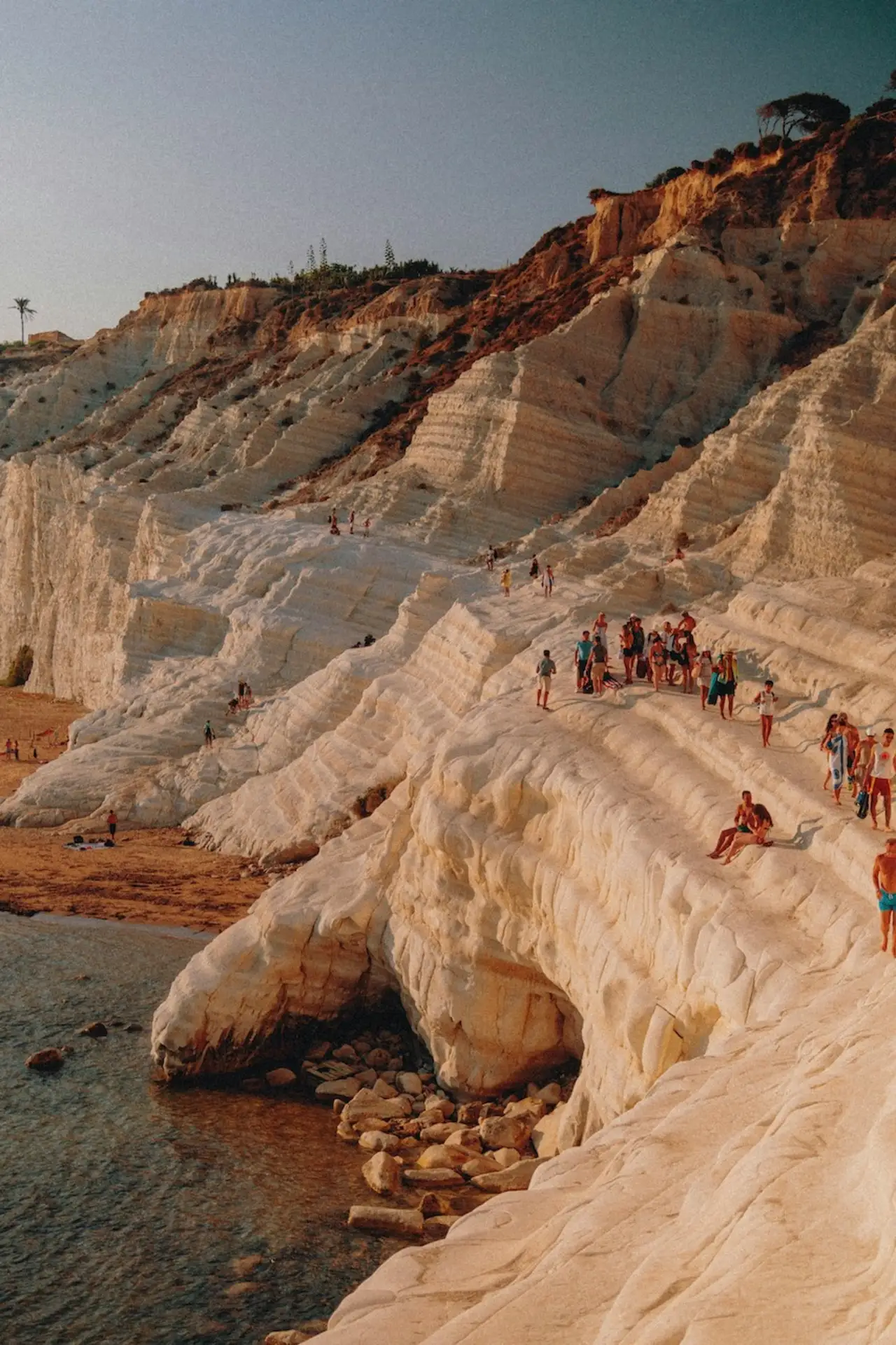Agrigento is a hilly city on the southwestern coast of Sicily. Founded by the Greeks around 581 BC, in its thousand-year history the city was settled by different populations (Greeks, Romans, Arabs and Normans) who left their traces on the island and each gave a different name. Girgenti was the official name for the city for many years, a name given by the Normans. After 1927, during the fascist period, the name became the one by which we know the city today, a name used for the city during Roman rule (Agrigentum).
Agrigento is known for the ruins of the ancient city of Akragas and the Valley of the Temples, a vast archaeological site with an expanse of Doric temples from the ancient Greek city; included in 1997 among the World Heritage Sites by UNESCO and named Italian Capital of Culture for 2025. On the outskirts of the modern city there is the Regional Archaeological Museum of Agrigento which houses artefacts and a Telamon (giant male statue); a colossus of almost eight meters in height, which was born from the merging of some large statues, the same ones that were placed between the columns of the famous temple of Olympian Zeus, of which only the ruins have survived. To the west, there is the Scala dei Turchi, an unusual white cliff with steps that overlooks sandy beaches, a color due to the type of minerals present. Agrigento is one of the most popular tourist destinations for both Italian and foreign audiences and is famous for having been the set for many famous films. The Scala dei Turchi with its white marl walls was in fact chosen by many directors of the caliber of Giuseppe Tornatore as the natural theater for some scenes of their films. Among the most important are Malèna, Il Commissario Montalbano, In Guerra per Amore, Arritmìa.



